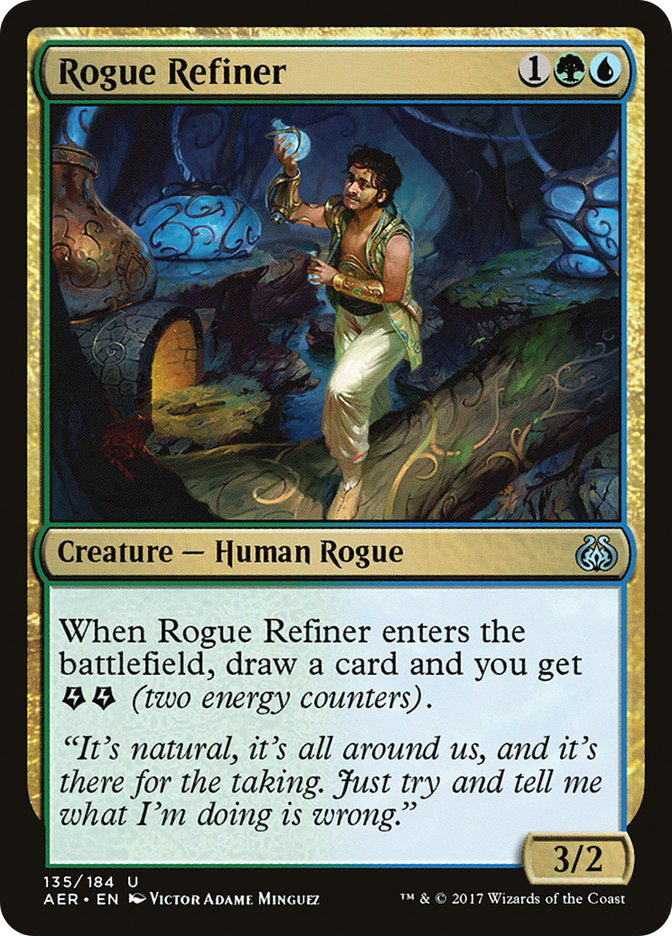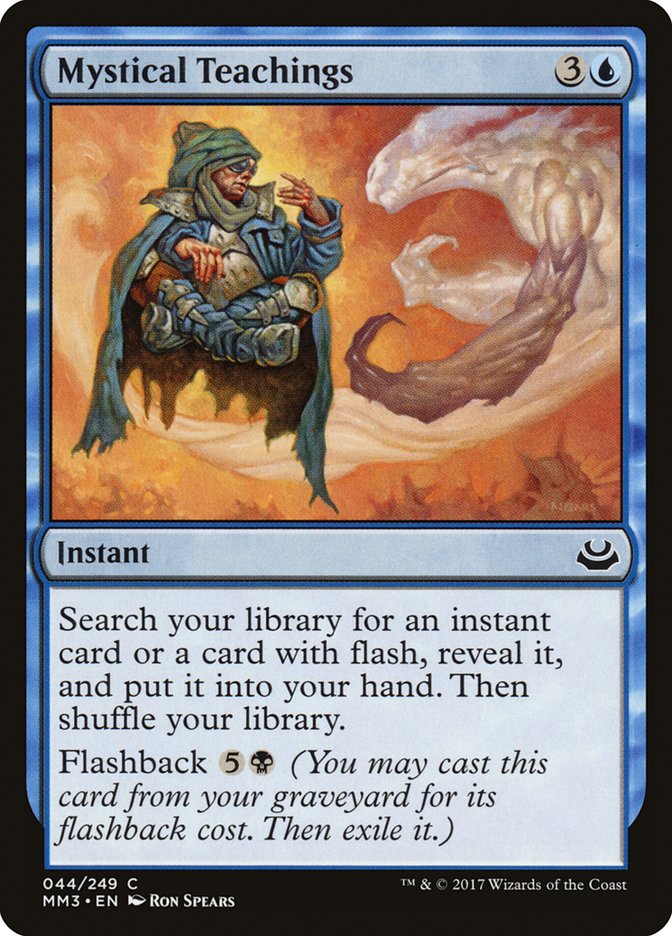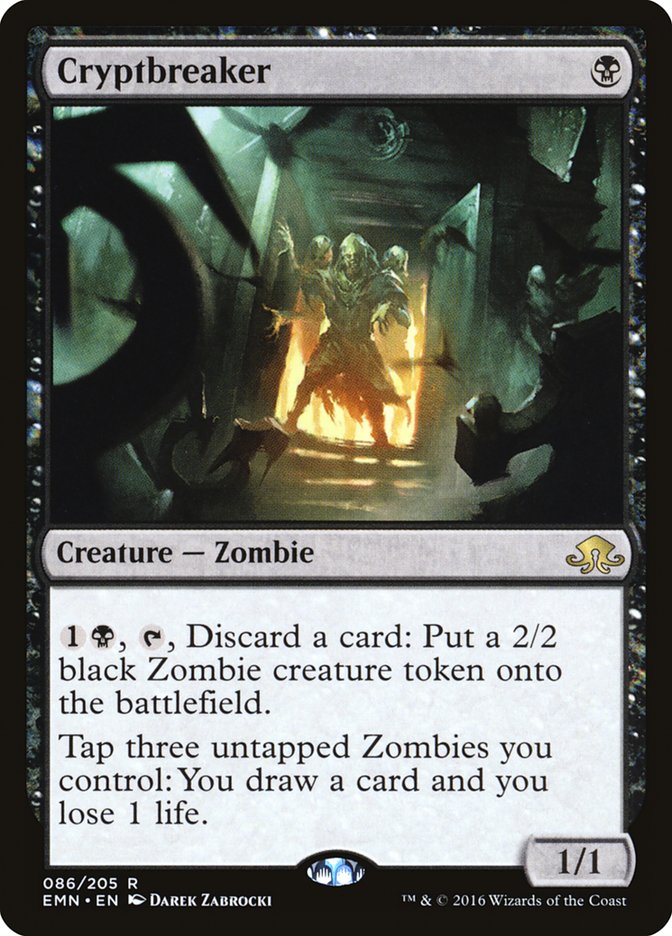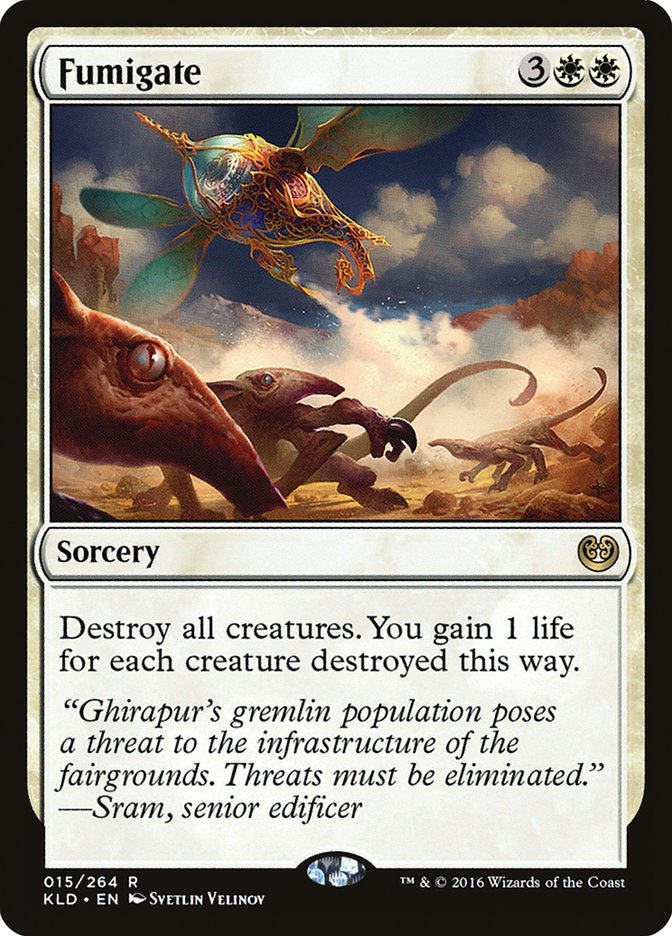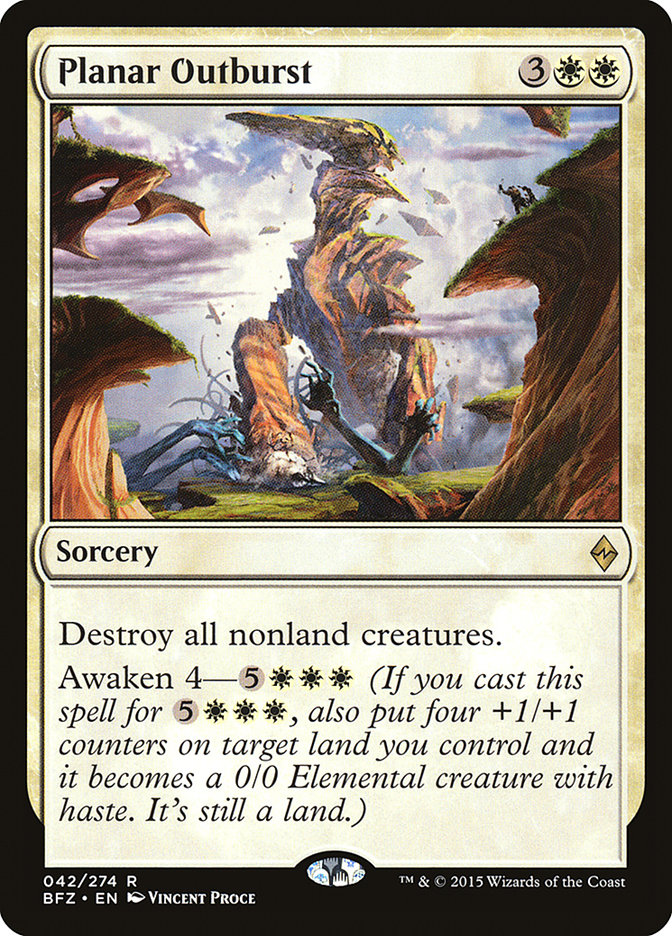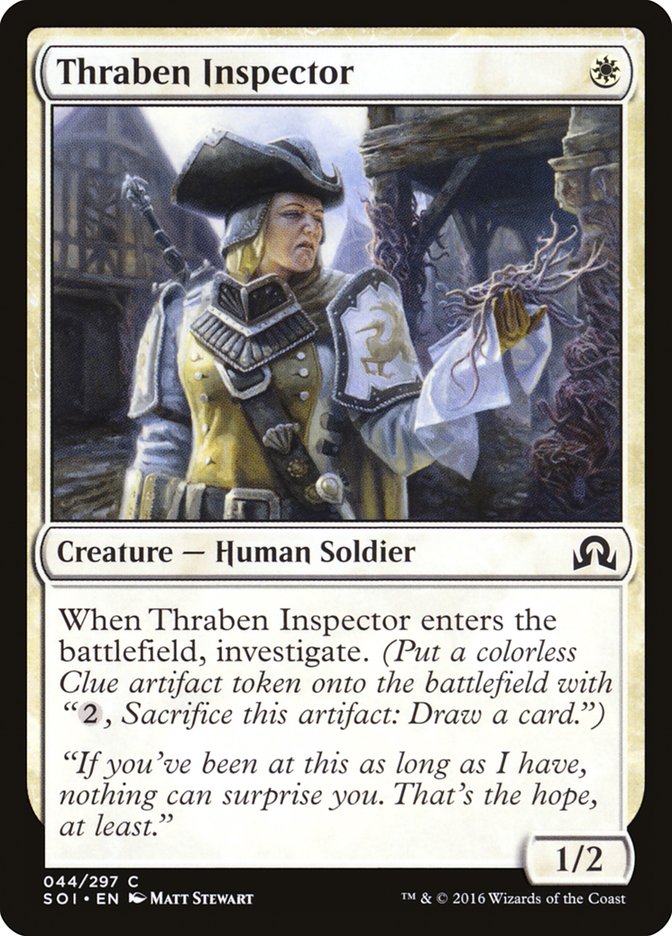Earlier this week
, I finally had a reason to write a Mono-Black Zombies primer. In it were
some sideboard plans that contained the essence of something I’ve been
thinking about a lot lately. It’s come up several times recently, and it’s
finally time to write about in depth.
Who’s the beatdown? How much interaction do you need? What cards in your 75
will best position you to take that role in the post-sideboard games? How
does velocity relate to this?
Coincidentally, most of these things have to deal with playing
midrange-leaning decks. That probably shouldn’t be surprising, since I’ve
been playing a lot of midrange lately.
Reaction and Interaction
Magic is an interactive game, but the ways we choose to interact have
costs. For each reactive card you have in hand, that’s one less land drop
you’re making or one less threat you’re deploying. You have to ask yourself
how often you want to be reactionary and when.
If you’ve played midrange against control, I’m sure you’ve had all your
threats countered or destroyed while you’re left staring at a hand full of
useless removal. The cost of putting those reactive cards in your deck is
that your opponent might build a game state where they’re not useful.
That’s one of the many reasons you hear “be proactive” as a general
strategy.
Decks that are more on the midrange spectrum are trying to play a very
specific game plan, although that game plan is going to shift depending on
where the game is going. They generally want to neutralize threats, or at
the very least, stop their opponent from accomplishing their goal.
Meanwhile, they have to apply pressure to end the game, which is often the
best way to stop their opponent from carrying out their game plan. The more
proactive you can be without devoting actual cards strictly to interact,
the more likely it is that you won’t stumble.
One of the skills I’m good at is getting a feel for matchups quickly and
figuring out what kind of interaction I want and in what quantities.
Things to consider:
-What threats do you need to beat?
-What threats do you actually have to remove? Can you beat those threats
without removing them?
-How bad is it if you can’t remove that threat immediately?
-If they don’t draw that threat, does my interaction have applications
against other cards or will it be a dead card?
If your opponent is playing control, you probably don’t need to answer many
threats. Still, the threats they present are typically ones that are
simultaneously going to function defensively, such as Kalitas, Traitor of
Ghet. In short, they are cards that you are going to have to beat, one way
or another. Is there a card you can play that deals with their threat but
can also not be a dead card, like Cast Out?
If your opponent is aggressive but has a high curve, like Mardu Vehicles,
how many Fatal Pushes can you afford to play? You certainly want to draw
one, but having multiple copies isn’t going to help you against Archangel
Avacyn and Gideon, Ally of Zendikar. Can you shave on them and risk losing
to a fast Toolcraft Exemplar / Heart of Kiran start?
Velocity
Velocity is the rate of which you see additional cards. Velocity, in
essence, is about card flow but not necessarily card advantage. Having more
options, which is why you typically want to use your higher casting cost
spells first, so then you have more options on subsequent turns with your
cheaper spells.
Gaining velocity helps give you more options, especially since it leads to
you making most of your land drops. Having more options allows you to react
favorably to a multitude of situations, which means you’ll rarely run into
a situation you can’t handle.
Velocity isn’t available for every deck, nor is it free, as you’re normally
paying mana for the effect. Realistically, all I want to do is use my mana
every turn. Having velocity gives you the ability to do that, thanks to
having more options. Tireless Tracker is the perfect example because it
gives you a mana sink and additional cards, in addition to becoming the
biggest thing on the battlefield.
Rogue Refiner is the quick version of Tireless Tracker. It allows you to
put a body out and get a little velocity going. Tireless Tracker going long
offers much more, but since people don’t have as much interaction in Game
1s, the games are faster-paced. Tireless Tracker is much better in the
post-sideboard games.
Those blue decks with low land counts in Modern and Legacy are capable of
existing because of velocity. Because you’re seeing so many extra cards on
average, you can afford to play fewer lands. Similarly, if you have a
reasonable amount of velocity, you can condense the amount of interactive
spells you play.
Velocity helps you not choke on reactive cards, so it’s frequently the best
way to ensure you have enough answers while still carrying on your game
plan. Those turns where you miss land drops and pass without accomplishing
anything are the turns where you’re sacrificing your edges.
Patrick Chapin and I once played over 60 cards in our Mystical Teachings
decks because we determined that we wanted somewhere in the neighborhood of
3.7 Damnations and 3.7 Mystical Teachings in our decks. When we played
three copies, it didn’t feel like enough, and when we played four copies,
it felt like we flooded on them.
It was a nice science experiment that didn’t particularly pan out, but I
also think we may have been tackling the issue all wrong. Instead of
increasing our deck size, we should have been trying to shrink it. If we
played three copies of Damnation and four copies of Ponder, we would find
Damnation at roughly the same clip as if we played four Damnations and zero
Ponders.
At that point, Ponder is effectively a split card. Maybe it turns into a
Damnation or a land or a counterspell, but we also have some control over
what it becomes. If nothing else, it digs a card deeper toward finding us
what we need.
Not all decks need velocity, but if the opportunity cost is mostly free,
it’s something to pay attention to and utilize if possible.
Creatures (24)
- 4 Relentless Dead
- 4 Diregraf Colossus
- 4 Cryptbreaker
- 4 Metallic Mimic
- 4 Lord of the Accursed
- 4 Dread Wanderer
Lands (24)
- 22 Swamp
- 2 Westvale Abbey
Spells (12)

My article last week put this into practice, and I think it was the biggest
reason why I did well at Pro Tour Amonkhet. The thing that came up
the most from playing Zombies was debating how many reactive cards I wanted
on the play rather than on the draw. The fact that Zombies was a
synergy-driven deck hindered that to some degree as well.
Cryptbreaker is incredible, and as I mentioned, I don’t think I ever lost
with an active Cryptbreaker. The actual card advantage from Cryptbreaker is
far less relevant than being able to contain whatever my opponent is doing.
Creatures (28)
- 4 Tarmogoyf
- 4 Noble Hierarch
- 4 Drowner of Hope
- 1 World Breaker
- 3 Eldrazi Displacer
- 4 Reality Smasher
- 4 Thought-Knot Seer
- 4 Matter Reshaper
Lands (24)
Spells (8)

In the mirror, you want access to cards like Path to Exile, Elspeth, Sun’s
Champion, and maybe Disdainful Stroke. But how many, in what numbers, and
when?
On the play, you are much better off producing threats and capitalizing on
their stumbles than holding up reactive cards.
When you’re on the draw, having cards like Disdainful Stroke are useful for
stealing back the tempo you lost by going second. When you’re on the play,
you don’t necessarily need that tempo advantage because you’ll naturally
have it by virtue of going first. Obviously you could make a case for
further cementing your tempo advantage with something like Disdainful
Stroke, but is that more effective than simply having an additional threat?
Creatures (10)
Lands (22)
Spells (28)
- 1 Negate
- 1 Kozilek's Return
- 4 Aetherworks Marvel
- 4 Woodweaver's Puzzleknot
- 4 Harnessed Lightning
- 4 Attune with Aether
- 4 Glimmer of Genius
- 3 Dissenter's Deliverance
- 3 Censor
Sideboard

The amount of reactive cards in your Marvel deck should have varied whether
you were on the play or draw.
Marvel was a great deck, but it wasn’t without issues. It had several dead
cards, but each of them played a significant role in getting to activate
Aetherworks Marvel on Turn 4. Velocity from Rogue Refiner and Glimmer of
Genius allowed them piece together their awkward draws.
Why Does Play or Draw Matter?
How often have you (hopefully silently) cursed after you lost a die roll?
When you start a game on the draw, your opponent is going to have the upper
hand; you’re constantly going to be reacting to what they’re doing. When
you’re on the play, they have to react to you.
If the games play out differently depending on whether you’re on the play
or draw, you should be configuring your deck differently. Your first few
turns on the draw are going to look much different than your first few
turns on the play, even though you’re playing the same matchup.
You occasionally see these sideboard plans where people shift their plans
post-board, bring in sweepers, extra removal, big threats, and extra mana
sources that they need for their higher curve. Those plans shift the
dynamic of a matchup and typically catch your opponent off-guard. They were
expecting one thing and you presented another.
In the case of sweepers like Fumigate or Planar Outburst, you have to take
into consideration what the fundamental turn is. For example, in G/W
Tokens, I would often want to cast Planar Outburst after they had already
cast a Collected Company. My Turn 5 on the play was when they had four mana
and Collected Company at the ready. In most matchups, you only need
Fumigate (and the like) to catch you up, which you’re far more likely to be
when you’re on the draw.
Conversely, on the play is generally when you have enough time to cast
something like Painful Truths, even if those matchups are typically
fast-paced. Painful Truths might not be something you want on the draw when
you’re already behind, but it could cement a winning position when you’re
on the play.
The Mardu Problem
The later versions of Mardu Vehicles were multi-faceted, capable of playing
multiple different roles, which can be very powerful in Standard. However,
moving toward a more midrange build created a new issue: curving one to
five.
Awkwardly enough, the deck is designed with that sort of curve in mind, but
it’s an incredible rarity that it actually can. If you’re on the play and
don’t mulligan, you’ll have eleven resources on Turn 5. If things go
perfectly, you’ll have five land and five spells, curving one through five.
You’ll even have an extra resource left over.
What happens if you mulligan? What happens if you have an extra land or
two? What about if you draw multiple one-drops? You’re going to have issues
at some point on your curve.
Drawing an excessive amount of reactive cards also compounds this problem.
What if all you can do on Turn 4 is point a Fatal Push at their Thraben
Inspector while they pound you with Thalia, Heretic Cathar?
What if you didn’t draw a perfect spread of your mana curve? You’d often
miss a drop and potentially lose the game on the spot. This is one of the
reasons Michael Majors advocated cutting Toolcraft Exemplars from Mardu. By
doing so, he was able to fill his curve to add to the consistency of
curving up to five.
Velocity would be a wonderful thing for Mardu, but Veteran Motorist and
Thraben Inspector are about the best things they’ve got. Something like
Nissa, Vastwood Seer or even Borderland Ranger would be ideal. Instead,
they’re stuck praying that everything works out.
You don’t need to curve out perfectly every game, but you really want to be
doing something on each of your turns. If you don’t, you risk falling
behind. With Mardu, you had very little in the way of catch-up mechanics,
so falling behind was often game over.
The same thing is true for Marvel, Mardu, Bant Eldrazi, and G/W Tokens; If
you couldn’t deploy threats and clear the way, it was often because you
were stumbling. If you choked on reactive cards, you would lose.
Mulliganning
A while ago, Paulo Vitor Damo da Rosa posted a “keep or mulligan” article
about this hand from an aggro deck on the play:


Yes, in a vacuum, your hand has “good” cards, but how are you winning? I
don’t mean in a “you have to mulligan until you get threats” kind of way,
but in a “how is this game going to play out?” kind of way.
You have more lands than you’d like, and even if you draw two spells in a
row, you’re flooded. Realistically, you’re going to be forced to use your
premium removal on mediocre threats. You’re better off mulliganning and
finding a couple three-drops to trade instead.
Would you keep two Grey Ogres and five land? On average, that’s what this
hand is going to amount to. If you aren’t using your great cards to good
effect, then how good is this hand?
Since this is a hand from an aggressive deck, that’s another reason to not
keep it. It was against a control deck, which presumably has a better late
game. Keeping this hand is likely going to lead to a late game actually
happening, at which point you’ll likely be outclassed.
If you were on the draw, you could make a better case for keeping. Being on
the play and down a resource with a strictly reactionary hand isn’t where I
want to be. If you draw a couple of creatures and hopefully clear the way,
that’s great. But I think you’ll find that mulliganning to six will
probably yield a similar hand, except without the risks.
There are some matchups where keeping a completely reactionary hand is the
plan, but those are few and far between.
Bringing it all Together
To recap, how much interaction you want in your 60 at any given time
depends on how much velocity your deck has, what threats you need to
interact with, whether those threats are “must answers,” and whether or not
you can beat those threats without removing them entirely. Being on the
play or draw should also be a huge influencer, as that dictates the pace of
the game and how often you’ll be on the backfoot.
A lot of this depends on getting a feel for the matchup, either the one in
front of you or the potential ones you’ll face in the tournament. Honing
your abilities to get to that point isn’t easy, but it will happen more
quickly if you’re actually looking for those answers.
I don’t consider myself a natural talent. If anything, maybe you could say
I’m good at learning. I’ve been playing Magic for over half my life and I’m
still learning. Understanding concepts like these goes a long way toward
making better decisions in deckbuilding and sideboarding.
Being able to decide how reactive I wanted to be has been responsible for a
lot of my wins lately.



